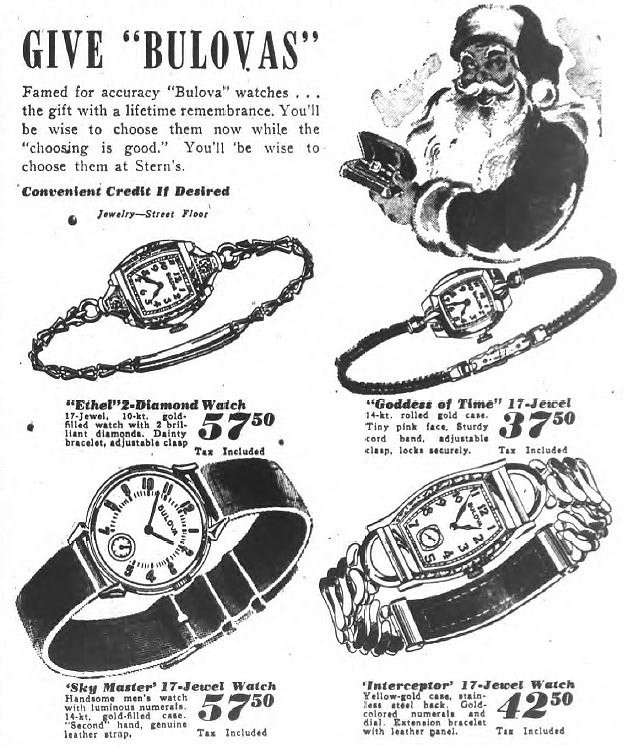1942?
Caseback has serial # only.
Inside caseback,BULOVA,10K ROLLED GOLD PLATE BEZEL,STAINLESS BACK,NEW YORK.
Dial has applied gold bulova logo and numbers,sub seconds dial has numerals every 10 seconds and is marked SWISS at the bottom,Gold hands.
Case is small at 26.12mm without the crown and lugs.
The closest model to this that I could find is the 1938 Apollo in the database.They bothseem to share similar dials,hands and case.
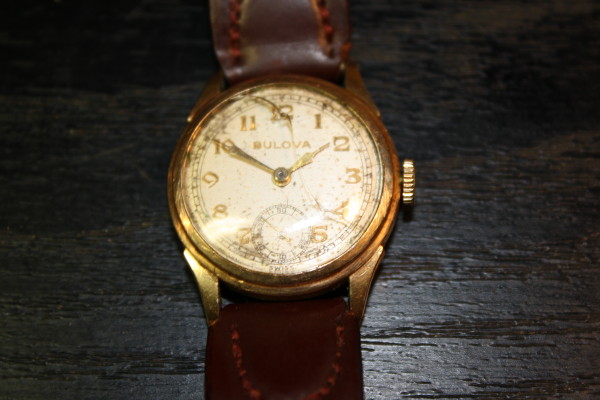
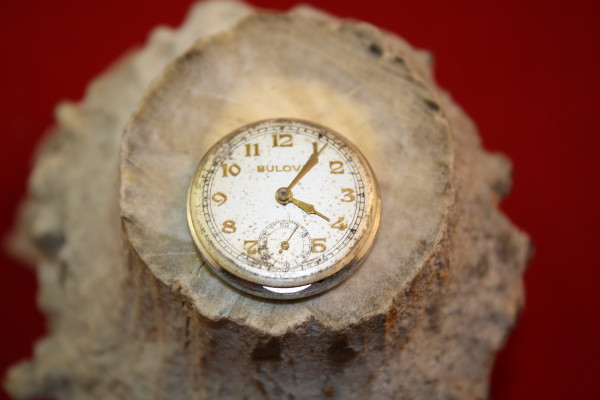
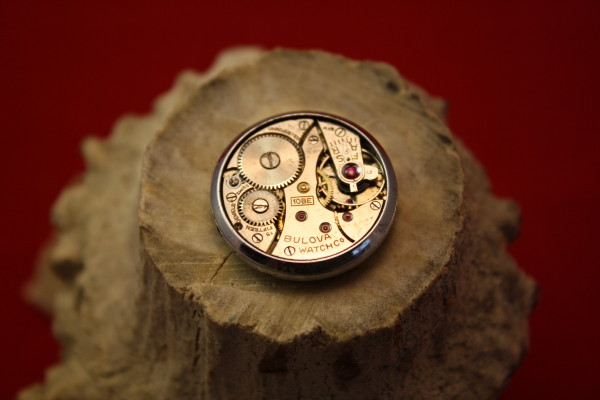
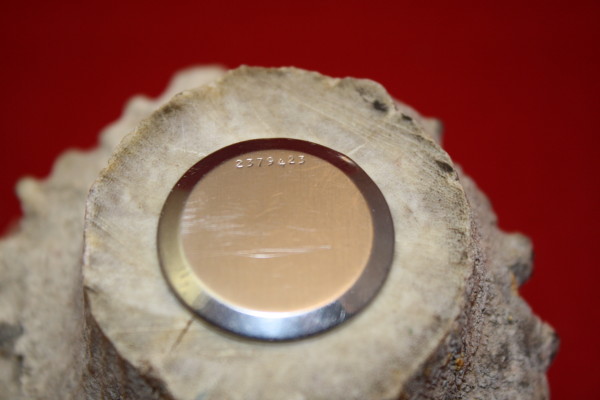
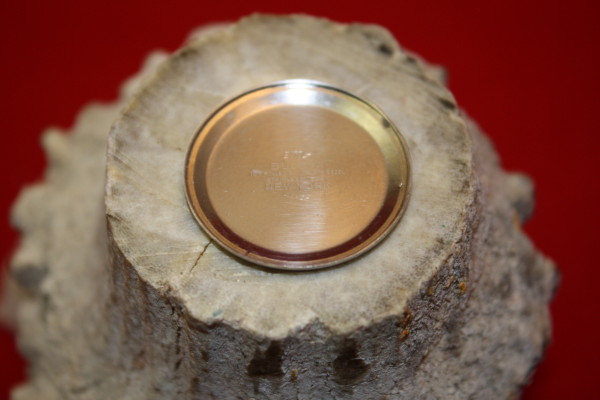
In reply to I don't know about a by denupnorth
I come across this reasoning from time to time through customers in my shop as well as from online collectors. It is important to note that dial refinishing has been done for almost as long as these watches have been in production. A watch produced in the 1940s and worn daily could certainly have sustained sufficient damage to warrant refinishing in the 1950s or 60s, and then show up again now with another 30, 40, or 50 years af age. Most refinishers make a notch in the edge of the dial at 12 or 3 o'clock position before stripping off the old finish. This mark helps them to precisely orient the die for the new imprint. Every dial I have ever had refinished over the years (I would guess close to 1000) have come back with this notch.
I have seen watches being sold with the claim of a perfect, ORIGINAL dial. Upon inspection of the dial outside of the case, a refinisher's notch could clearly be seen.
Refinishers may also inscribe the back of the dial with some in-house information. I have seen dials with 4 different such markings on the back, indicating that it has possibly been refinished 4 different times during its life. Not so surprising when you think about watches that have been around for 60, 70, 80, even 90 plus years.
In the case of the subject watch, I do not have an opinion aout the dial... it could very well be original.
Just food for thought...If you buy an "ALL-ORIGINAL" watch that looks too good to be true, it just might be!
I believe what we are seeing here is a 'transitional' model of the Apollo.
This has the dial of the 1938 Apollo examples seen, and the case of the 1947 advert example (thanks Daca!).
I think the reason we see no adverts for it is Bulova were advertising the military style models more at this time. There may be ads somewhere, but they will prove hard to find in my opinion.
I say Apollo.

In reply to A very interesting comment by denupnorth
It would be very useful (but more work) if folks took a picture of the front/back of a dial when its removed from the watch- at least on dials which are questionably redialed. Of course, that's only if they have the dials off anyway. I'd not go the extra mile to take one of my watches apart simply to check this, but if I had dial out anyway, I'd snap a pic.

